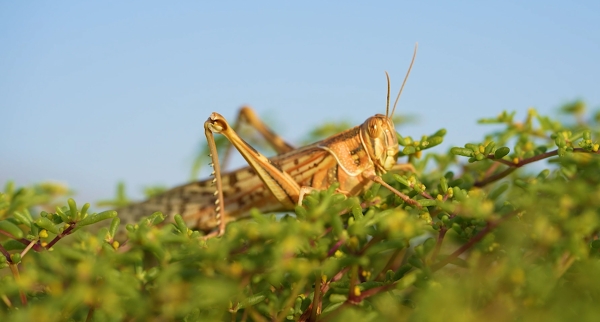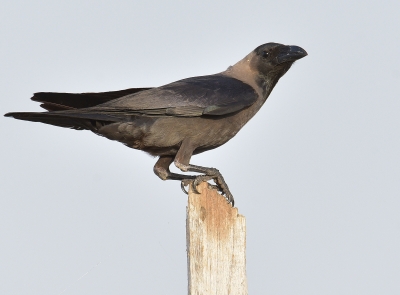
Locusts in the Kingdom of Saudi Arabia (Crocothemis erythraea) are insects of the "Odonata"of the "Dragonflies and Grasshoppers (Locusts)" species. They are widespread across the Kingdom. They feed on insects and wild plants.
Lifecycle of a locust
The spread of locusts is due to the presence of several water-covered areas that enable olive green-colored female locusts to lay eggs within water surfaces upon insemination by male locusts. Eggs hatch, giving birth to hatchlings feeding on harmful water bugs, such as mosquito larvae, among others. These hatchlings grow into hoppers that feed on winged insects. As they hop from one plant to another, hatchlings contribute to the accidental pollination of plants.
Types of locusts
There are two types of locusts of the "Orthoptera" order. The first type is widely spread and poses a major issue since it feeds on the leaves and stems of wild plants, ultimately harming these plants. It is also a food for birds and reptiles. The second type is also commonly found. It feeds on various "Apocynaceae" plants, where it extracts the plant's milky substance and stores it in its body to protect it against natural enemies such as birds and reptiles.
Locusts control
Locusts live in dry environments, with sporadic and seasonal rains. They require a humid environment for laying and growing eggs. Hence, they move in swarms, often directed by winds. There are three main seasonal areas for locust migration to the Kingdom. These areas extend from west to east and include North Africa, Middle Eastern countries, southern Iran, and Pakistan.
Locusts are one of the strategic agricultural pests. This is due to the serious damage they inflict upon crops. Locusts eat between two and three g of plant leaves, which is equivalent to their daily weight. A single locust swarm consists of very large numbers, sometimes including up to fifty million locusts that could spread over one km and eat around one hundred t of green-colored pigment. This is equivalent to producing thirty ha of maize, forty ha of Rhodes grass, seventy ha of alfalfa, or destroying fifty ha of wheat farms. Hence, locusts often cause major crop losses.
The National Center for the Prevention and Control of Plant Pests and Animal Diseases (Weqaa), affiliated with the Ministry of Environment, Water, and Agriculture, oversees locust scouting and control operations across the Kingdom. Control operations are conducted by applying several methods, such as using axial propellers to spray emulsifiers, micro-spraying, fogging, and poisonous baits. These methods are applied by ground and aerial control teams to eliminate this pest.
The Kingdom assumed the chairmanship of the Commission for Controlling the Desert Locust in the Central Region, which includes seventeen countries from the Arabian Gulf, Yemen, the Levant, and East Africa from June 2022 to November 2024.
Related quizzes
Related articles


